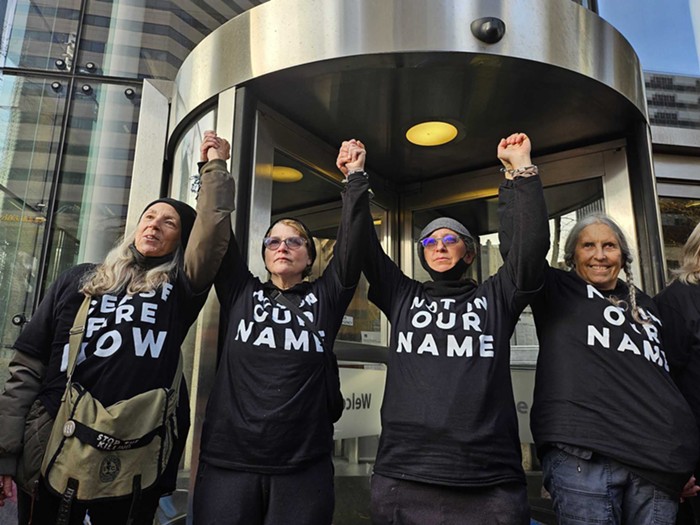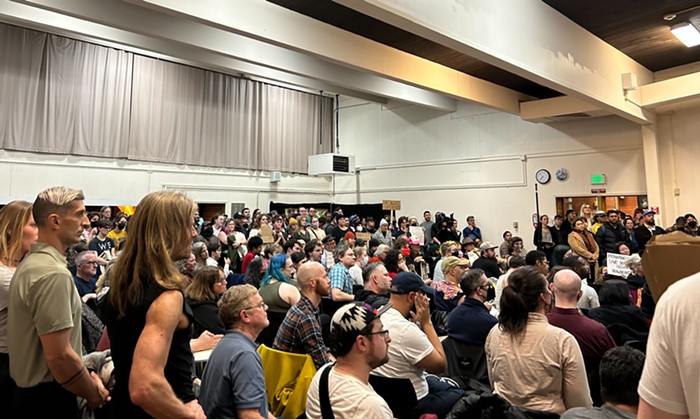
After great controversy, this week the Southend Tiny Home Village finally opened with a clear goal: Provide shelter for people experiencing homelessness in the South End. Andrew Constantino, an Assistant Tiny House Program Manager at Low Income Housing Institute (LIHI), said this new village will help bridge a gap in resources between unhoused populations in south and north Seattle.
Despite the village’s stated goal, however, the City will reserve at least five of LIHI's 40 tiny shelters for people swept out of encampments up north. The decision represents the latest example of the way the City balances the occasionally competing pressures of expediency and equity in shelter referrals.
“The City does not give a fuck about referring people within their neighborhood. They only care that someone is camping in a rich, white-person neighborhood. They want to control every opening and decide who goes everywhere. They don't want us to fill one single opening anywhere with anyone local,” Constantino said, adding a disclaimer that he was giving a “hot take.”
On Tuesday, the City swept a large encampment at Woodland Park, tearing down over 40 tents and other makeshift homes. The City said outreach workers made an “unprecedented” 83 referrals to various temporary shelter options, ranging in desirability from an overnight stay in a congregate shelter to a unit in a LIHI shelter village, what at least one King Country Regional Homelessness Authority (KCHRA) staff member would call a “shantytown.”
Sweeps often trigger a mad dash in the nonprofit sector to find shelter spots, many of which, including LIHI’s tiny shelters, get reserved to accommodate displaced people. LIHI offered the City about 30 tiny shelters for unhoused people living at Woodland Park. Eight of those were located north of the cut, and eight others were in Interbay and South Lake Union. The remaining 14 referrals sent Woodland Park residents to the South End, including the five spots in the new South End Village, according to Josh Castle, Director of Advocacy and Community Engagement at LIHI. That means the City and the nonprofit will secure five fewer places in the new village for people in the South End and kick five people from Woodland Park down the road more than 10 miles from where they had previously planted roots. Castle said many of these Woodland residents will be temporary, and LIHI will shuffle people around.
But this is not the first time spots went to people from whichever encampment the City felt political pressure to sweep rather than to people within the village's own neighborhood.
Recently, LIHI opened up a tiny shelter village in the University District called Rosie’s Place. Its opening coincided with another major sweep of Ballard Commons, which produced referrals that pushed people from Ballard to the U-District. U-District and Ballard are closer than Woodland Park and the Southend Village, so that move may not so completely cut off people from their existing communities and resources. Still, not sticking to the village's original mission likely won’t win any points with the neighborhood.
Sites like the Southend Village require community buy-in to prop up. So when the City and nonprofits fill spots with people who do not live in that neighborhood, the community that fought for, asked for, or just begrudgingly accepted these resources won’t reap the benefit of reducing visible homelessness on an extremely local level. In the South End especially, this causes an equity issue.
In an email, Councilmember Tammy Morales expressed frustration over the City putting Woodland Park residents in the Southend Village after the southern neighborhoods she represents asked the City to give the same level of attention and resources to their communities as it gives to the north end.
“There’s a huge disparity in what parts of town get services and support and this isn’t the first time that a north end community gets extended time and services at the expense of the little resources the Southend gets allocated,” she said in a statement.
The closest tiny shelter village to Woodland Park is Friendship Heights on Aurora Ave. Castle said that LIHI offered all the open shelters from Friendship Heights to accommodate the sweep, but only a small pool of three or four remained after the Bitter Lake sweep. Supply and demand play a huge role in this issue of less-than-ideal placements. Because demand is so high and supply is so low that it is hard to be picky about who goes where.
In an email, the Mayor's Office said, "Mayor Harrell is committed to addressing homelessness in every neighborhood, helping get people off of streets and out of parks by ensuring culturally competent housing and service resources."
Constantino said ideally LIHI would refer all the people that the City swept to “Woodland Park Village,” but that village does not exist. Meanwhile, efforts to build more tiny shelters at the expense of building more permanent solutions run the risk of contravening recommendations from the 2017 State Advisory Council on Homelessness. That committee did not recommend the sheds as much more than an emergency stopgap, though some people living outside would rather stay in the small, private units rather in overnight shelters with fewer amenities. The ideal would be a more permanent housing option built where people want to live.



















